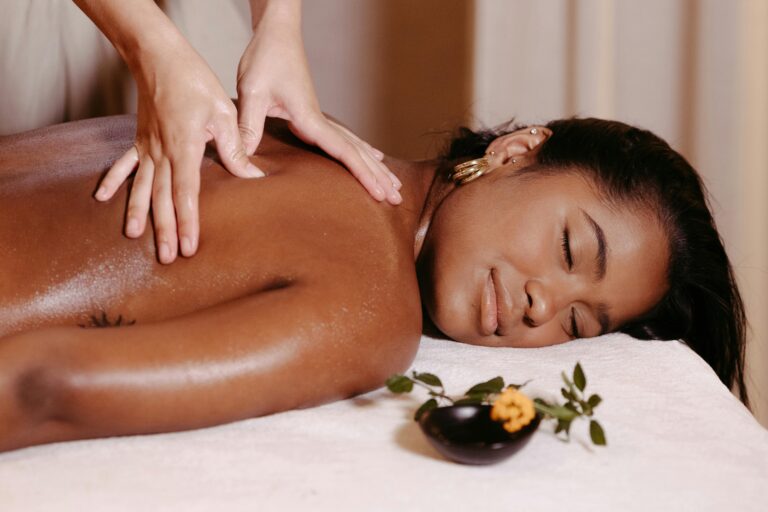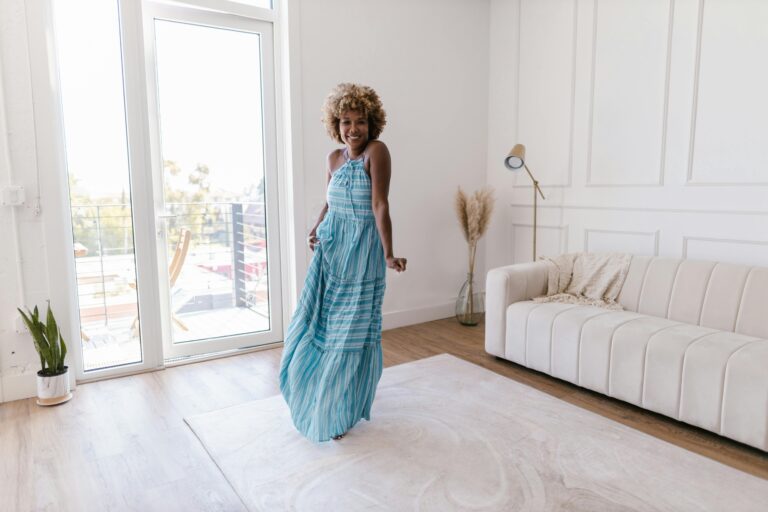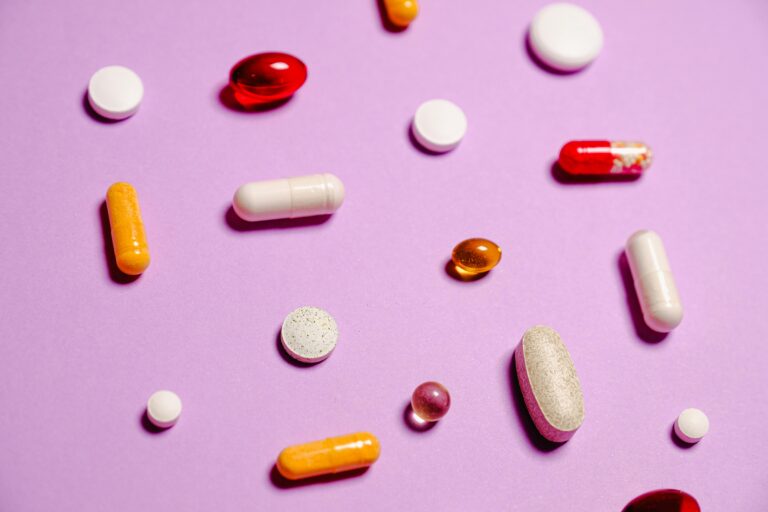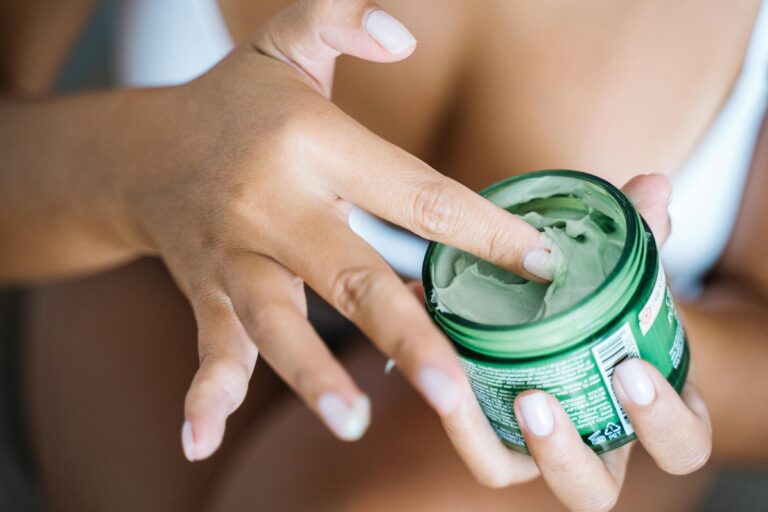9 Best Plants for Bedroom: To Improve your Sleep


Struggling to get a good night’s sleep? The solution might be greener than you think!
Certain plants not only enhance your bedroom’s aesthetic but also purify the air, reduce stress, and promote better sleep.
Let’s explore the best sleep-friendly plants and how to care for them.
This site contains affiliate links, view the disclosure for more information.
Top 9 Plants for bedroom
1 . Lavender – Lavandula

Lavender isn’t just a pretty purple flower—it’s basically nature’s stress reliever.
Known for its soothing fragrance, lavender has been scientifically proven to lower heart rate, reduce anxiety, and improve sleep quality. According to research published in the Journal of Alternative and Complementary Medicine, lavender increases deep or slow-wave sleep (SWS), helping you wake up refreshed and invigorated.
How to Care for Lavender
- Light: Place the plant on a sunny windowsill; it needs 6-8 hours of sunlight daily.
- Watering: Let the top inch of soil dry before watering. Avoid overwatering to prevent root rot.
- Soil: Use well-draining soil, like a cactus mix combined with sand.
- Temperature: Maintain indoor temperatures between 60°F and 70°F (15°C to 21°C).
- Fertilizing: Apply diluted liquid fertilizer every 6-8 weeks during the growing season.
- Repotting: Refresh soil and repot every 1-2 years as needed.
Interesting Fact: Lavender has been a staple in aromatherapy since ancient Roman times for its calming effects.
2. Jasmine – Jasminum

Jasmine’s sweet fragrance is a powerful sleep aid. Its scent impacts GABA, a chemical in the brain that calms the nervous system, reduces anxiety, and improves sleep efficiency. Studies suggest that jasmine is even more effective than some sleeping pills in promoting restful sleep.
Interesting Fact: The name Jasmine derives from the Persian word yasmin, meaning “a gift from God.”
How to Care for Jasmine
- Light: Bright, indirect sunlight is ideal.
- Watering: Keep soil consistently moist during the growing season; reduce watering in winter.
- Humidity: Maintain moderate to high humidity by misting the plant or using a humidity tray.
- Soil: Use a lightweight, well-draining potting mix.
- Temperature: Ideal temperatures are between 60°F and 75°F (15°C to 24°C).
- Fertilizing: Feed with a water-soluble fertilizer every 2-4 weeks during active growth.
3. Snake Plant – Sansevieria
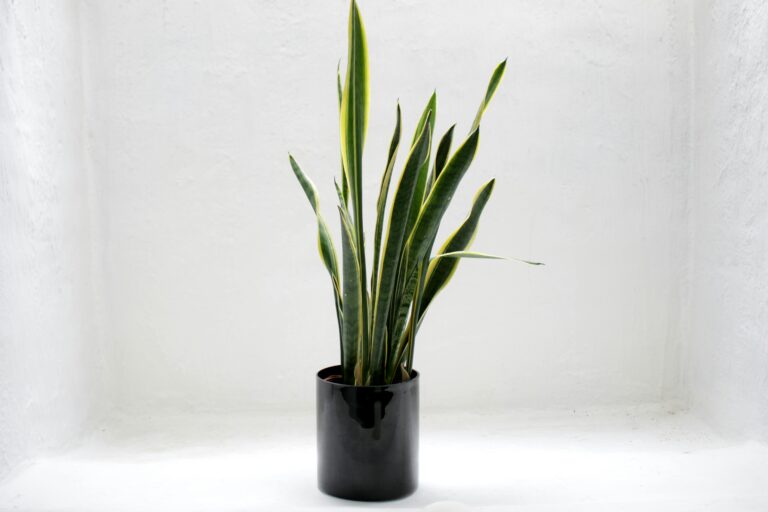
Snake plants release oxygen at night while filtering harmful pollutants from the air. This improves sleep quality and reduces headaches, eye irritation, and respiratory issues, nearly indestructible – ideal for beginners.
Interesting Fact: Known as “Mother-in-law’s Tongue,” it’s a symbol of good energy in Feng Shui.
How to Care for Snake Plant
- Light: Tolerates low to bright indirect light.
- Watering: Allow the soil to dry out completely between waterings.
- Soil: Use a well-draining sandy potting mix.
- Temperature: Thrives between 60°F and 85°F (15°C to 29°C).
- Fertilizing: Feed with cactus fertilizer every 2-3 months.
4. Peace Lily – Spathiphyllum

The Peace Lily’s air-purifying qualities and its ability to increase humidity make it a perfect bedroom plant. Its delicate aroma reduces stress and promotes relaxation, creating an ideal environment for sleep.
This plant is ideal for bedroom because is a natural air purifier and removes common indoor pollutants.
Interesting Fact: Peace Lilies symbolize peace and prosperity and are often used in spiritual spaces.
Care Tip: Wipe the leaves occasionally to remove dust and maintain its glossy appearance.
How to Care for Peace Lily
- Light: Thrives in medium to low indirect light.
- Watering: Keep soil consistently moist but avoid waterlogging.
- Humidity: High humidity is ideal; mist leaves or use a humidifier.
- Soil: Use a rich, well-draining potting mix.
- Temperature: Maintain temperatures between 65°F and 80°F (18°C to 27°C).
- Fertilizing: Apply a balanced houseplant fertilizer every 6-8 weeks during growth periods.
5. Aloe Vera – Aloe vera
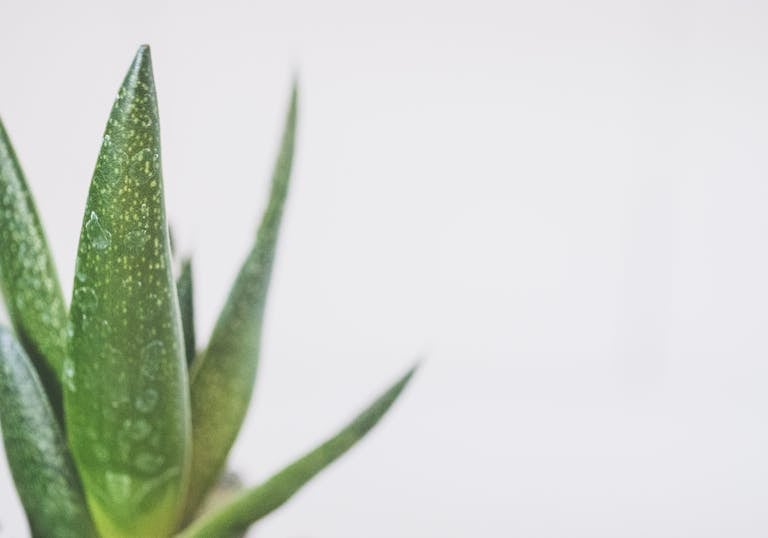
Releases oxygen at night, provides medicinal gel for burns and skin care and requires minimal watering. Aloe vera emits oxygen at night, creating a cleaner air environment.
Interesting Fact: Ancient Egyptians called aloe vera the “plant of immortality” and used it in burial rituals
Care Tip: Avoid watering the aloe vera too frequently—it thrives in arid conditions.
How to Care for Aloe Vera
- Light: Prefers bright, indirect sunlight or partial shade.
- Watering: Water deeply but infrequently; let the soil dry completely between waterings.
- Soil: Use a cactus or succulent potting mix.
- Temperature: Tolerates 55°F to 80°F (13°C to 27°C).
- Fertilizing: Feed sparingly with a succulent fertilizer during the growing season.
6. Pothos – Epipremnum aureum
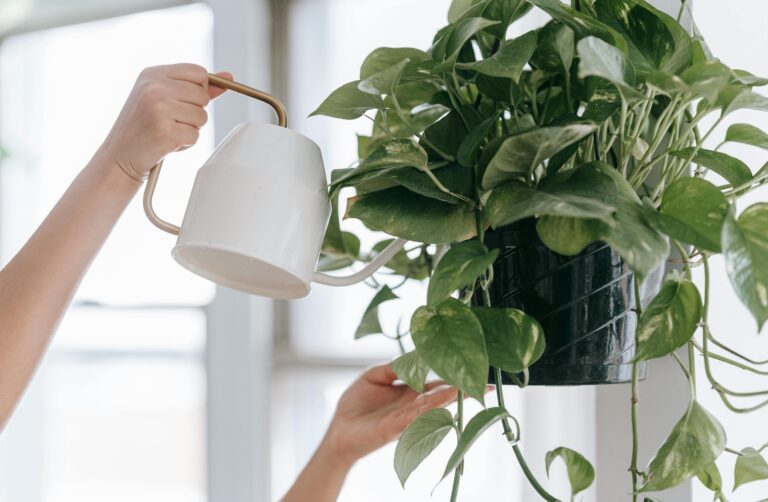
Trailing vines create a peaceful atmosphere, photos is available in various leaf patterns, purifies air and thrives in a variety of lighting conditions. Interesting Fact: Also cKnown as “Devil’s Ivy,” Pothos is highly resilient and can grow even in low-light conditions
Care Tip: Trim the vines regularly to keep the plant bushy and prevent leggy growth.
How to Care for Pothos
- Light: Tolerates low to bright indirect light.
- Watering: Water when the top 1-2 inches of soil are dry.
- Soil: Use a general-purpose, well-draining potting mix.
- Temperature: Best between 60°F and 80°F (15°C to 27°C).
- Fertilizing: Feed monthly with a balanced liquid fertilizer during the growing season.
7. Gardenia – Gardenia jasminoides
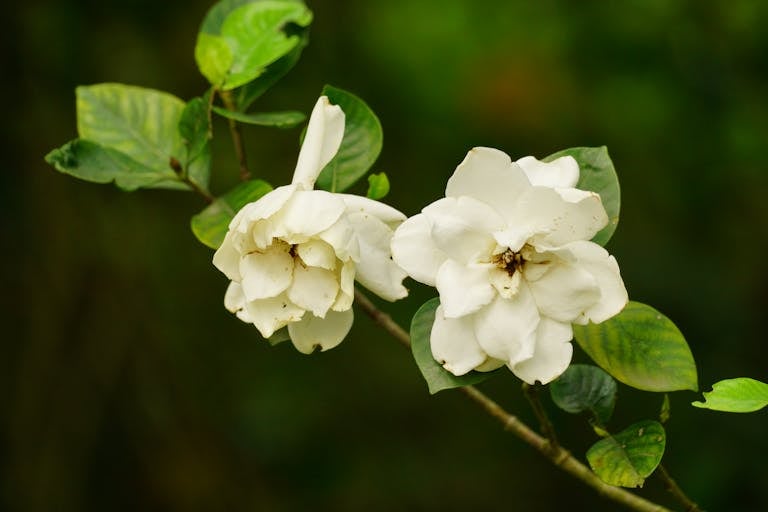
Gardenias are stunning, but they can be a little diva-ish.
They need the perfect combo of acidic soil, humidity, and warmth to thrive, but if you get it right, you’re rewarded with some of the most fragrant white blooms ever. The scent promotes relaxation and emotional balance and is often used in perfumes and aromatherapy, if you love a challenge (or just really love fragrant flowers), a gardenia might be worth the effort.
Care Tip: Mist the plant regularly to maintain humidity and avoid dry air.
Interesting Fact: Gardenias symbolize purity and love in various cultures.Powerful natural fragrance aids sleep.
How to Care for Gardenia
- Light: Requires bright, indirect sunlight for at least 6 hours daily.
- Watering: Keep soil moist but not soggy. Use distilled water to avoid mineral build-up.
- Humidity: High humidity is essential. Mist daily or use a humidifier.
- Soil: Use an acidic, well-draining potting mix.
- Temperature: Ideal range is 65°F to 75°F (18°C to 24°C).
- Fertilizing: Use a fertilizer formulated for acid-loving plants every 2-4 weeks during active growth.
8. Chamomile – Matricaria chamomilla
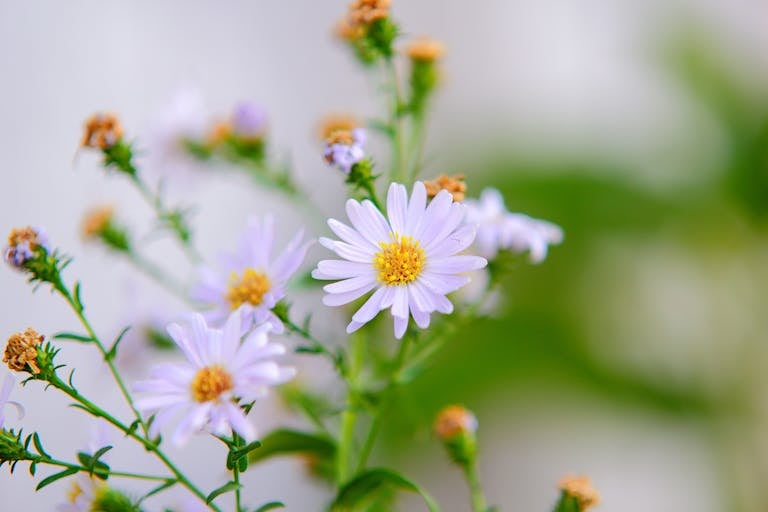
Chamomile is basically a warm hug in plant form. Used for centuries in teas, it helps with relaxation, digestion, and even skin care, the flowers look like tiny daisies and smell mildly sweet.
Super easy to grow, chamomile loves the sun and doesn’t need much attention—just pick the flowers, dry them, and make your own calming tea!Chamomile’s calming fragrance is perfect for relaxation.
Care Tip: Harvest the flowers regularly to encourage more blooms and prevent the plant from going to seed too soon.
Interesting Fact: Chamomile has been used in herbal medicine for centuries as a natural sleep remedy.
How to Care for Chamomile
- Light: Prefers full sun.
- Watering: Keep soil consistently moist.
- Soil: Use well-draining soil.
- Temperature: Thrives between 60°F and 70°F (15°C to 21°C).
- Fertilizing: Feed sparingly with a balanced fertilizer during growth periods
9. Boston Fern – Nephrolepis exaltata

Boston ferns are like little green clouds—soft, feathery, and full of life. They’re amazing at purifying the air and love humidity, making them perfect for bathrooms or kitchens.
The only catch? They need a bit more attention—regular watering and misting keep them looking lush. But hey, a little effort for a plant that makes your space feel like a tropical oasis is totally worth it!Natural air humidifier, removes indoor air pollutants.
Care Tip: Place the fern in a bathroom or use a humidifier to maintain the high humidity it loves.
Interesting Fact: Boston Ferns were popular during the Victorian era for their lush, elegant foliage.
How to Care for Boston Fern
- Light Requirements: most sleep-enhancing plants prefer indirect light. Place sun-loving varieties like lavender and chamomile near windows. Rotate plants regularly for even growth.
- Watering Guidelines: check soil moisture before watering. Ensure proper drainage to prevent root rot. Increase humidity for tropical varieties. Reduce watering in winter months
Creating Your Sleep Sanctuary
While plants can significantly enhance your sleep environment, they work best alongside good sleep habits. Maintain a regular bedtime, limit screen time before bed, and create a dark, quiet space. With the right plants and care, your bedroom can transform into a tranquil retreat that promotes restful sleep. Sweet dreams!
Safety Considerations: research plant toxicity before purchase and keep potentially harmful plants out of reach of children and domestic animals, consider pet-safe alternatives if needed.
RELATED POSTS

19 Natural Ingredients for Hair Care That Actually Work (And Why You’ll Never Go Back)
Okay, real talk. If you’ve ever stared at the back of a shampoo bottle and felt like you needed a chemistry degree to understand it… you’re not alone. Between the sulfates, parabens, and mystery “fragrance”…

